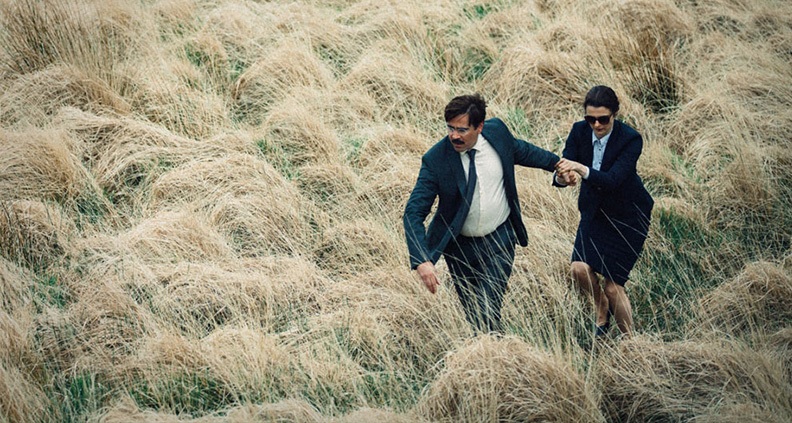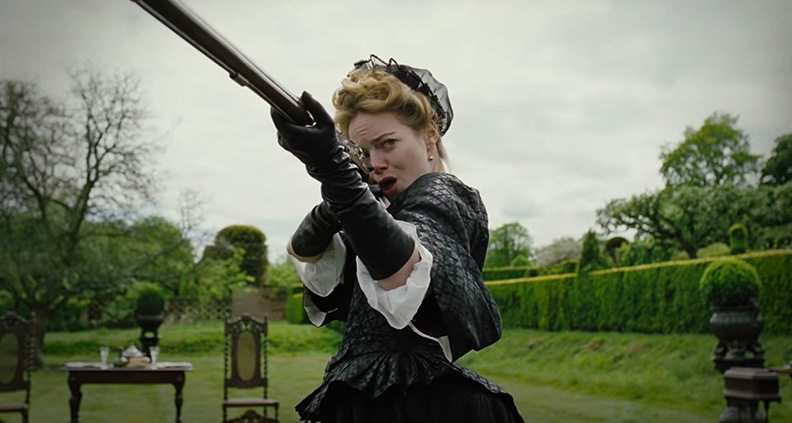Oscar Week Rewind: ‘The Favourite’ Editor Yorgos Mavropsaridis on Creating Palace Intrigue
Hollywood’s biggest night (that isn’t the 2024 Film Independent Spirit Awards) is coming up, with the 96th Academy Awards taking place this Sunday, March 10. Of course, many Oscar-nominated filmmakers began their careers in independent film. So! This week we’re taking a look back at some of the best Film Independent moments from this year’s Oscar nominees. First up: Poor Things editor Yorgos Mavropsaridis on cutting 2018’s The Favourite.
***
Having just nabbed 10 prizes at the British Independent Film Awards (“BIFA”) and recently nominated for five Golden Globes, Greek editor Yorgos Mavropsaridis’ latest project—unpredictable royal intrigue tragi-comic period piece The Favourite—is making a huge splash as awards season heats up. Mavropsaridis and director Yorgos Lanthimos go way back to the latter’s early commercial work, with Marvropsardis editing all of the critically acclaimed Lanthimos’s feature films to date, including 2015’s The Lobster and 2017’s Film Independent Spirit Award nominated The Killing of a Sacred Deer.
With a royal-intrigue plot centered on the court of lame-duck monarch Queen Anne in the early 18th century, The Favourite is currently nominated for Best International Film at the 2019 Film Independent Spirit Awards. We recently spoke to Mavropsaridis about bringing his director’s unique cinematic sensibilities to life, including the story behind the film’s mysterious ending. Here’s the conversation:
YORGOS MAVROPSARIDIS, EDITOR

How did you get started as an editor in your native Greece?
Mavropsaridis: After I graduated from the London International Film School, I returned to Athens and started working in the newly developing Greek film “industry” in commercials. There I had the chance to collaborate with some of the most interesting filmmakers of the time, doing TV commercials mainly to finance their films.
The Favourite puts a dark, comical spin on the serpentine nobility of Queen Anne’s court. What was the tone Yorgos Lanthimos was aiming for and how did you accomplish that?
Mavropsaridis: The Favourite shares with all of [Lanthimos’s] films a common interest in themes that I call his “existential questioning.” With this basic tone as the foundation of all his work, he experiments with shades of tonality in each film. In The Favourite you can easily discern this darker tone in counterpoint with a brighter tone, expressed with fast-paced dialogue, fast wipes, but also more self-conscious track-ins and compositions, extreme wide lenses, low-level shots with the actors looming above us, sequence shots and montage sequences with interwoven space and time. As with all Lanthimos’s films, the way he chooses to tell a story lends itself to a very personal conversation with the viewers about his favorite themes.
There’s so much going on in the scene where Lady Sarah [Rachael Weisz] and Abigail [Emma Stone] are shooting pigeons on the luxuriant palace estate. This comes immediately after we see Abigail dancing for the first time with the Queen. Talk about the contrast between two sequences.
Mavropsaridis: The dancing scene between Abigail and the Queen is an example where the formal elements of film shape meaning. The continuity style of editing would interpret it as a scene where Abigail uses her charms to entice the Queen; then we see Lady Sarah looking on jealously from afar. So the next scene depicts their struggle, which is where the pigeon-shooting scene between Lady Sarah and Abigail comes in. The way we present this, the viewer sees two girls having fun, free of intentions, happy in the moment. It’s the introduction of the sound from the pigeon-shooting scene into the dancing movements that undermines this playfulness and emotional innocence. In this case, the juxtaposition of sound and image between the two sequences betrays the underlying jealousy, fear and struggle for power.
Was it always intended to focus equally on the three female characters rather than zeroing in on one character’s POV?
Mavropsaridis: In the written script, the story starts with Abigail’s arrival at the palace as the catalyst for the shifting favors of love and power dynamics in the court. As viewers, we’re trained to identify with the “hero” or “heroine”; so if we had followed this order of events, the audience presumably would have identified with Abigail as the lead protagonist and see the story as her ordeal, her goals and her efforts to achieve those goals. In the final edit, we decided to start the film with a scene between Queen Anne [Olivia Colman] and Lady Sarah discussing love as they understand it: one unconditional, the other with limits. This scene is followed by the main title, then the scene where Queen Anne declares her unconditional love for Lady Sarah as she understands it—by giving her a palace as a gift in the middle of a long-fought war. This is followed by the title of the first chapter—“This Mud Stinks”–as Abigail first sets foot in the palace pleading for her distant cousin Lady Sarah’s assistance. We used the same music throughout this sequence to connect the three women, as we will be examining how we perceive and abuse love and desire to obtain power through each of these women’s struggle to come out on top.

What was it like to edit the humorous-but-bizarre dance sequence, where the Lady Sarah shows off some acrobatic moves to Baroque period music?
Mavropsaridis: The editing had to be faithful to the existing choreography and modernity of the dance, while at the same time keep intact the shifting emotions on the Queen’s face. In one continuous shot, we observe in a slow tracking shot what she feels as she watches two young people enjoying something that she can no longer do.
The color palette of the film is very vibrant. What was the process like working with the film’s digital intermediate (colorist) team?
Mavropsaridis: The vibrancy of the picture was there from the first “one light” pass the lab did in our editing files. Lanthimos likes to edit having the best possible color correction in our rushes. You cannot properly edit if the image and the sound contradict the mood that the director is trying to create. Lanthimos likes to keep the feeling as “analog” as possible, that’s why he prefers to shoot using negative and mostly uses natural sources of light.
Now let’s talk about the ending sequence—spoilers!—where images of the Queen, Abigail and the bunnies are imposed on each other blended into a vortex of sustained misery. What was going through your mind as you worked on that scene?
Mavropsaridis: The technical difficulties to actually construct this shot were quite enormous: long hours adding, multiplying and superimposing the frames to encapsulate the horror of the situation. We did this with simple loops, repetitions, superimpositions and fades. You see close-ups of two very talented actresses: the slight involuntary tweak in Abigail’s face as the perpetual torment of her situation dawns on her, and then the wisdom the Queen finds in accepting her pain, a spoiled child no more.
You’ve worked on many of Yorgos Lanthimos’ films. What keeps drawing you back to his projects?
Mavropsaridis: His dedication to our art, his cinematic vision and the challenging way in which he approaches his subject matter. Because he demands the best that you can offer, each collaboration makes you a better version of yourself. But most of all, he takes extremely good care of his team.
Film Independent helps creative voices advance new work and builds awareness and community around artist-driven visual storytelling. Film Independent Members watch nominees and vote for the winners of the Spirit Awards. To become a Member of Film Independent and make your vote count for next year’s 40th Annual Spirit Awards, just click here. To support our mission with a donation, click here.